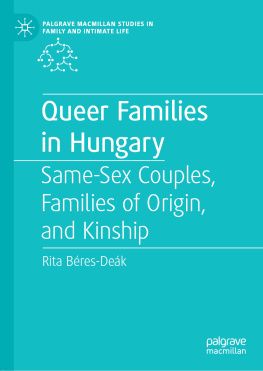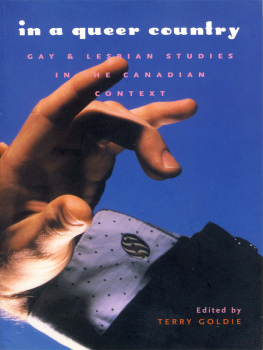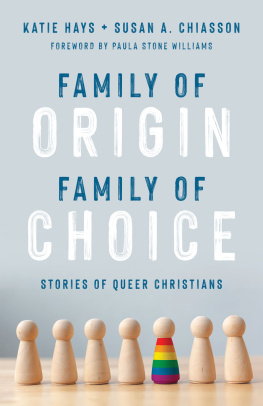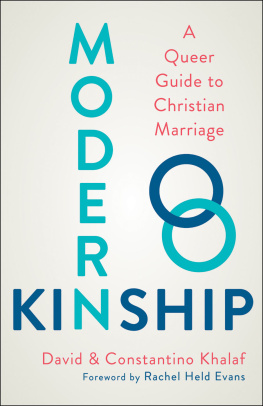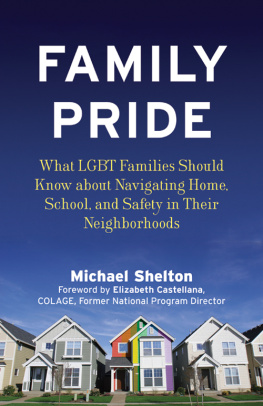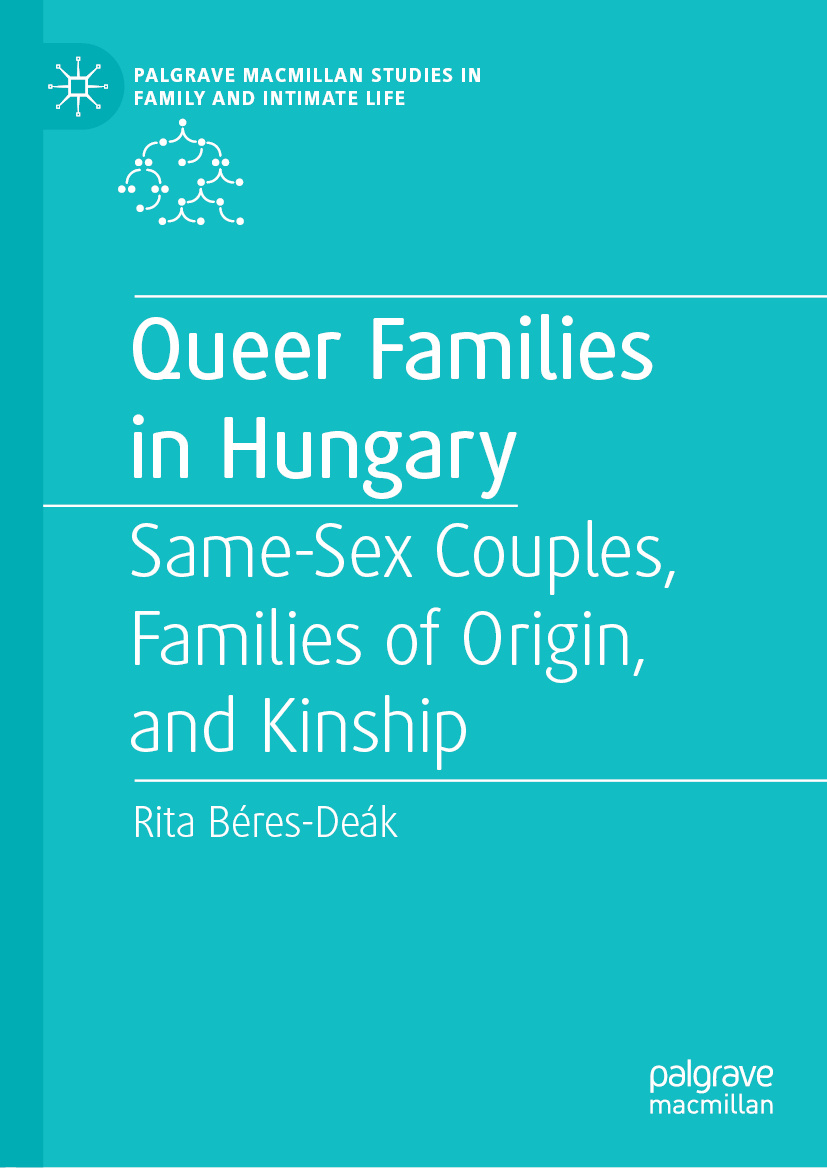Palgrave Macmillan Studies in Family and Intimate Life
Series Editors
Graham Allan
Keele University, Keele, UK
Lynn Jamieson
University of Edinburgh, Edinburgh, UK
David H. J. Morgan
University of Manchester, Manchester, UK
The Palgrave Macmillan Studies in Family and Intimate Life series is impressive and contemporary in its themes and approachesProfessor Deborah Chambers, Newcastle University, UK, and author of New Social Ties .
The remit of the Palgrave Macmillan Studies in Family and Intimate Life series is to publish major texts, monographs and edited collections focusing broadly on the sociological exploration of intimate relationships and family organization. The series covers a wide range of topics such as partnership, marriage, parenting, domestic arrangements, kinship, demographic change, intergenerational ties, life course transitions, step-families, gay and lesbian relationships, lone-parent households, and also non-familial intimate relationships such as friendships and includes works by leading figures in the field, in the UK and internationally, and aims to contribute to continue publishing influential and prize-winning research.
More information about this series at http://www.palgrave.com/gp/series/14676
Rita Bres-Dek
Queer Families in Hungary
Same-Sex Couples, Families of Origin, and Kinship
Rita Bres-Dek
Budapest, Hungary
Palgrave Macmillan Studies in Family and Intimate Life
ISBN 978-3-030-16318-1 e-ISBN 978-3-030-16319-8
https://doi.org/10.1007/978-3-030-16319-8
The Editor(s) (if applicable) and The Author(s), under exclusive license to Springer Nature Switzerland AG 2020
This work is subject to copyright. All rights are solely and exclusively licensed by the Publisher, whether the whole or part of the material is concerned, specifically the rights of translation, reprinting, reuse of illustrations, recitation, broadcasting, reproduction on microfilms or in any other physical way, and transmission or information storage and retrieval, electronic adaptation, computer software, or by similar or dissimilar methodology now known or hereafter developed.
The use of general descriptive names, registered names, trademarks, service marks, etc. in this publication does not imply, even in the absence of a specific statement, that such names are exempt from the relevant protective laws and regulations and therefore free for general use.
The publisher, the authors and the editors are safe to assume that the advice and information in this book are believed to be true and accurate at the date of publication. Neither the publisher nor the authors or the editors give a warranty, express or implied, with respect to the material contained herein or for any errors or omissions that may have been made. The publisher remains neutral with regard to jurisdictional claims in published maps and institutional affiliations.
This Palgrave Macmillan imprint is published by the registered company Springer Nature Switzerland AG
The registered company address is: Gewerbestrasse 11, 6330 Cham, Switzerland
Acknowledgements
I am greatly indebted to all the people from the Hungarian LGBTQ community and their families who have shared with me stories and in some cases events from their lives. This book would not have come to life without you, and I am trying to do my best to give you voice and provide increased visibility for stories like yours.
This book is based on my Ph.D. research at the Gender Studies Department of the Central European University, Budapest. I am grateful to CEU for making it possible and also for being a beacon of hope for researchers and academic freedom in my country.
It would take too long to list here all the scholars who have influenced me; their names will appear on the following pages often enough. I must, however, mention some who have given me important feedback on my work, including (but not limited to) Hadley Z. Renkin, Ellen Lewin, va Fodor, Dri Rdai, Rhel Kati Turai, Roman Kuhar, and Judit Takcs. I am indebted to Amelia Derkatsch from Palgrave Macmillan for considering this book worth publishing and for helping me along with this process.
For information on the legal background, I am indebted to Tams Dombos, one of the few legal experts I know who can actually speak in a way intelligible to ordinary humans. Csilla Faix-Prukner and Krisztin Rzsa, family therapists and leaders of the Rainbow Families Foundation, have provided me with valuable sites for fieldwork, as well as psychological literature and friendship.
From the beginning of research to writing this book has been more than a decade. Over this time, what sustained me was partly my friends at Httr, in sz<3ft, at VndorMsok, and our very secret Facebook group of cat-loving feminists. You guys deserve all the virtual hugs and cats in the world! I am grateful to my parents for being much nicer and more flexible than many described on the following pages. Last but not least, I want to thank my own queer family: a human and a cat, Andrs and Kristf. Without their unrelenting love, you would not be reading these words nowand yet words do not suffice to express what I feel for them.
Contents
1. Introduction
A:
Recently they [my gay cousin and his boyfriend] had a kind of wedding. Where they strengthened their commitment. We were out on Margaret Island, there were some hundred of us. [] They asked a friend to give a speech, kinda substitute the priest, to speak about them and their relationship as he knows them. And then I dont know, we let up these lighted balloons into the sky, we almost set fire on some trees.
BDR:
Oh, so you mean there were candles lit inside these balloons?
A:
Yes, kinda like that. It has some name too, but theyre no longer [used], now theyre banned. Besides [laughs], it was so soon after the wedding that they got banned that
BDR:
You mean perhaps this was the reason?
A:
Maybe, yes, because really we sent up I dont know how many into the sky. [] And it was really scary to see how this thing was nearing the leaves of the trees. So it was really scary. But we didnt set fire on anything. (Anik, interview)
This short account of a gay commitment ceremony in many ways symbolizes for me several themes that I encountered during my research. Though same-sex couples are not allowed to marry in Hungary, Anik calls the ceremony a wedding , a foundational ritual of kinship , which is also a major site for the installation and maintenance of the institution of heterosexuality (Ingraham ). Another connection to the public sphere is the fact that the balloons were banned soon afterward (whether or not as a result of this ceremony), which is another way the law restricts practices related to kinship . The presence of Anik and other heterosexuals at the ceremony connects the LGBTQ community with the family of origin and shows that heterosexual kin actively participate in extending (as well as limiting) the possibilities of same-sex couples.

